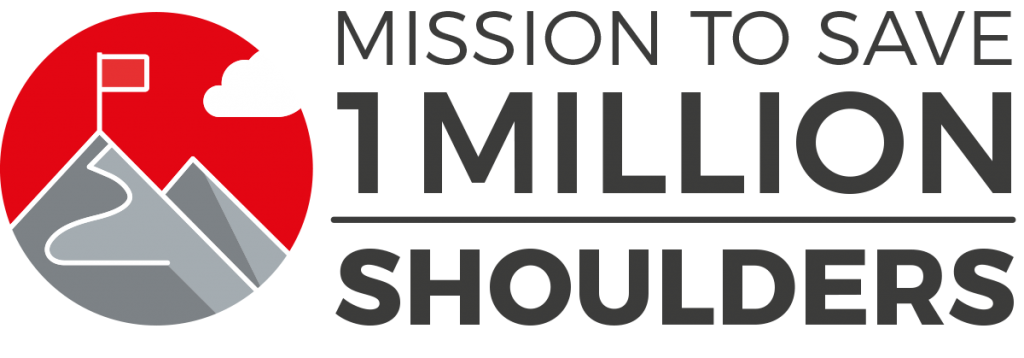Like with all high-intensity sports, Crossfit is very demanding of the body, such that pain, injury, rehabilitation, and prevention are (and should be) top of mind for Crossfit athletes both casual and serious. In particular, shoulder pain and shoulder injury are of special concern, as over half of the injuries that occur in Crossfit are shoulder-related. As such, the effort to build strong, healthy shoulders is essential for Crossfit athletes.
When it comes to shoulder pain and injury, we at Crossover Symmetry believe that education and proactive measures are taken to address dysfunctions and prepare athletes for the demands of the sport are key.
First, let’s try to understand what goes on with the shoulder in Crossfit and why they are under so much stress and, as a result, risk of injury. Crossfit incorporates functional movements while moving large loads over long distances in a short amount of time. In order to perform these high-demand athletic movements, it’s important to make sure that the prime movers in the body have a stable platform to operate on.
The typical Crossfit athlete has developed upper trapezius, levator scapula, deltoid, and rhomboid muscles, mostly as a result of the shrugging motion. However, these four are only a few of the 17 muscles that have attachments to the scapula, or shoulder blade, and themselves play a limited role in the stability essential for shoulder health and performance.
For healthy overhead shoulder mechanics, the upward rotators of the scapula and rotator cuff need to be strengthened in correct proportions in order to create balance in the shoulder. By improving the function of the scapular stabilizers and rotator cuff, the entire shoulder complex can operate at an optimum level, reducing the excessive motion that leads to injuries and poor performance.
Think about it: the shoulder and the scapula are intricately linked: what affects the scapula will affect the shoulder and vice versa. The shoulder joint is often referred to as a ball and socket type of joint. But the truth is that the shoulder is structured more like a golf ball on a tee, with the ball being a lot larger than the socket. This essentially allows for a lot of mobility, but at the expense of stability, setting up for potential injuries, impaired balance, and impaired performance.
The scapula is the triangular-shaped bone in the upper back that serves as the crucial link between the arms and trunk of the body. It’s the foundation upon which all upper extremity strength and function are built. But instead of having a fixed foundation, the scapular foundation moves in three dimensions, changing the orientation of the socket to follow the movement of the arm. When you raise your arm fully over your head, 2/3 of the motion occurs at the shoulder and 1/3 occurs at the scapula. As the scapula moves in sync with the arm, it has to remain a stable base of support in order to efficiently transfer energy from the body into the arms.
In the Crossfit athlete, the scapula is responsible for transferring the power produced from the legs, hips, core, and torso to the upper body. Ideally, this would be a stable, yet mobile, platform with minimal energy loss during athletic movement. However, with only one boney attachment between the arm and the trunk, the sternoclavicular joint, the efficiency of energy transfer through the scapula relies on the stabilizing muscles. If the scapula muscles function at a low level due to weakness, imbalance, or poor neuromuscular control, the result will be a large energy leak in the kinetic chain.
All the time, Crossfit athletes are asked to move incredibly heavy loads, quickly and over large distances or high numbers of repetitions. In order to be safe and effective in this sport, efficient movement is essential. Any excessive movement is a waste of valuable energy. But, when you enhance the balance and function of the shoulder’s stabilizing structures, the prime movers can perform their duties without wasting energy trying to perform a secondary task like stability.
Let’s look at thrusters, for example. Most of the power for this lift comes from the legs, hip, core, and trunk with the last “thrust” coming from the shoulders. If there’s a poor energy transfer from the body to the arms, the maximum amount you’ll be able to lift will be reduced. Similarly, if the main shoulder muscles involved in this movement – the deltoid, upper trapezius, and levator – have to stabilize in addition to move the load, the total amount of work applied toward raising the weight will be reduced. The bottom line here? If you can improve your shoulder stability, you’ll improve your efficiency and your max lifts.
As we mentioned, the typical Crossfit athlete has overdeveloped upper trapezius, levator scapulae, deltoid, and rhomboid muscles as a result of the sport, and therefore relatively underdeveloped lower trapezius, middle trapezius, serratus anterior, and rotator cuff, frequently throwing the shoulders into imbalance.
So what can that imbalance lead to?
The first issue is the breakdown of the intricate link between the scapula and humerus. If the scapula muscles are functioning poorly due to weakness, imbalance, or lack of neuromuscular control, the shoulder complex will lose energy and create a less-than-ideal foundation for the arm.
Further, for many Crossfit athletes, an imbalance in the upper trap results in limitations in the ability to upwardly rotate the scapula when going overhead, setting the shoulder up for injury with repetitive overhead movement.
One other muscle group which plays an important role in scapular function but is often overlooked is the serratus anterior. What it does is:
- Hold the scapula onto the rib cage
- Assist in upward rotation when moving the arm overhead
- Protract the shoulder around the body with pushing movements.
Dysfunction of the serratus anterior is called scapular winging, but it often goes unrecognized without a thorough examination by a trained professional.
Another issue for Crossfit athletes relates to problems with the rotator cuff, which is composed of four muscles responsible for keeping the humeral head centered in its socket during arm movement. Because of the shoulder joint’s inherent instability, the rotator cuff plays a key role in stabilizing the joint, which, when done poorly, can lead to injury and impaired performance.
Finally, let’s talk about what happens when we’re not in the gym. The forward shoulder posture that comes from desk work, driving, texting, eating, and other sedentary activities characteristic of our day and age wrecks good shoulder position. Unfortunately, it can also result in a chronic state of shoulder impingement which inhibits good overhead movement.
Shoulder impingement is a broad term that refers to shoulder pain resulting from the pinching of the structures within the shoulder complex. Unfortunately, it’s also very common in Crossfit. The most common cause of shoulder impingement is poor shoulder mechanics during repetitive overhead activities, which are often the result of faulty posture, poor scapular positioning, muscular imbalance, and poor rotator cuff control.
So how can we address these issues and prevent them from happening?
Well, with the shoulder being the most commonly injured area in Crossfit athletes, it’s crucial to supplement with a good stability program. The Crossover Symmetry Shoulder System has been designed specifically to address and balance the stabilizers of the shoulder complex, including the scapular and rotator cuff muscles.
While the Crossover Symmetry Shoulder System can’t fix your desk job or social media addiction, it does incorporate active stretching for the shortened pectoralis minor and strengthens the muscles that support the thoracic spine, both major issues seen in those with that forward shoulder position we mentioned above.
Like we said, Crossfit athletes, need to take care of the dysfunctions that occur both as a result of lifestyle adaptations and the sport itself. Crossfit demands speed through a variety of shoulder movements and a lot of heavy vertical pulling. As a result, continuing to engage in Crossfit tends to further complicate shoulder issues, at least until the underlying dysfunction is corrected.
The Crossover Symmetry Shoulder System has been designed to address the specific needs, time constraints, and demands of the Crossfit athlete. With the combination of the three phases of the Crossover Symmetry System (Activation, Recovery, and Activation+) and the IRON SCAP (STRENGTH) scapular strengthening program, the system promotes, restores, and maintains the function of the shoulder complex, allowing Crossfit athletes at all levels to reach their full potential.
The demands of the muscle groups required to accomplish the sport of Crossfit need to be complemented with shoulder rebalancing strengthening exercises. So – a call to all athletes! Don’t sit on the sideline because your shoulders suck. Fix the dysfunction instead.







